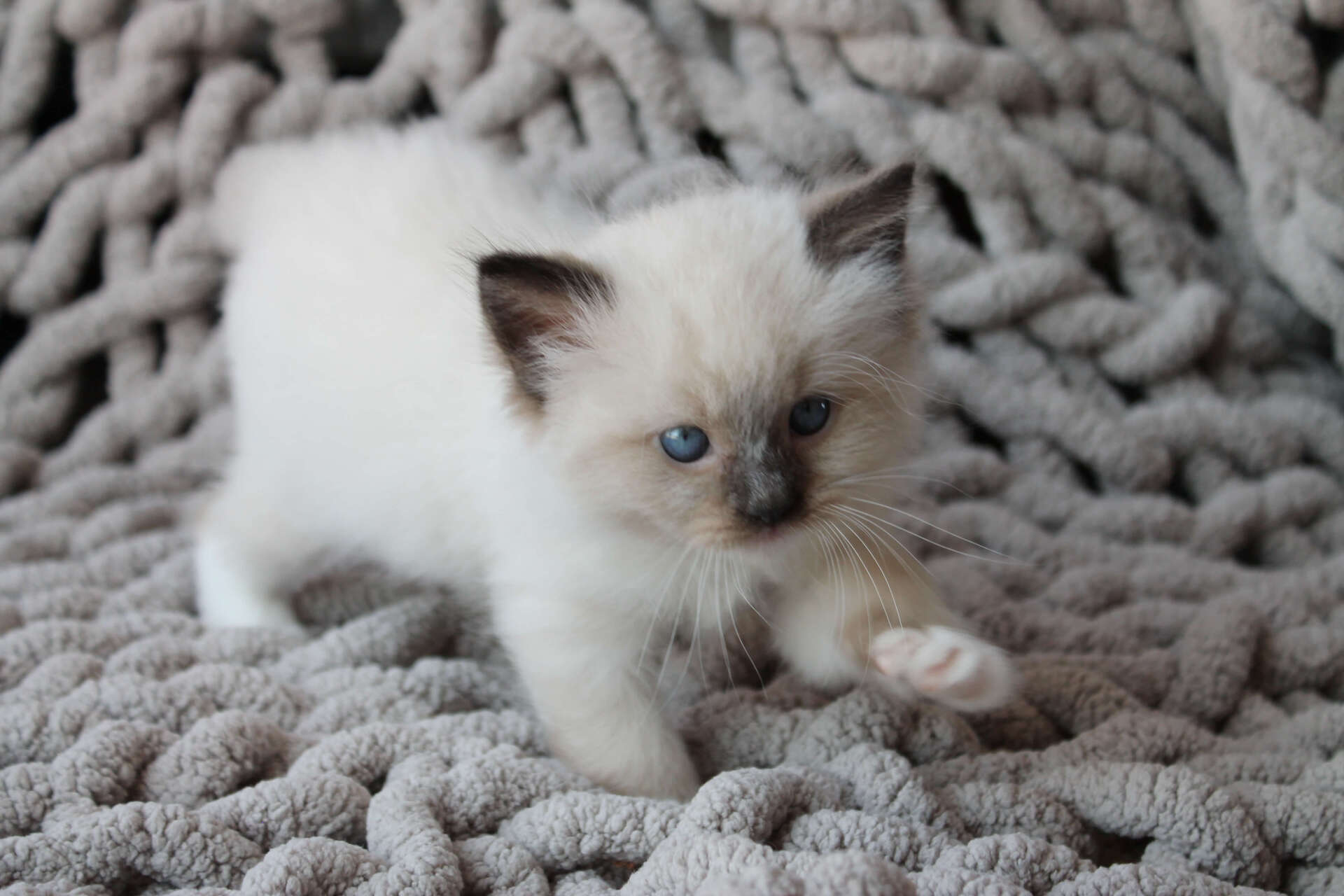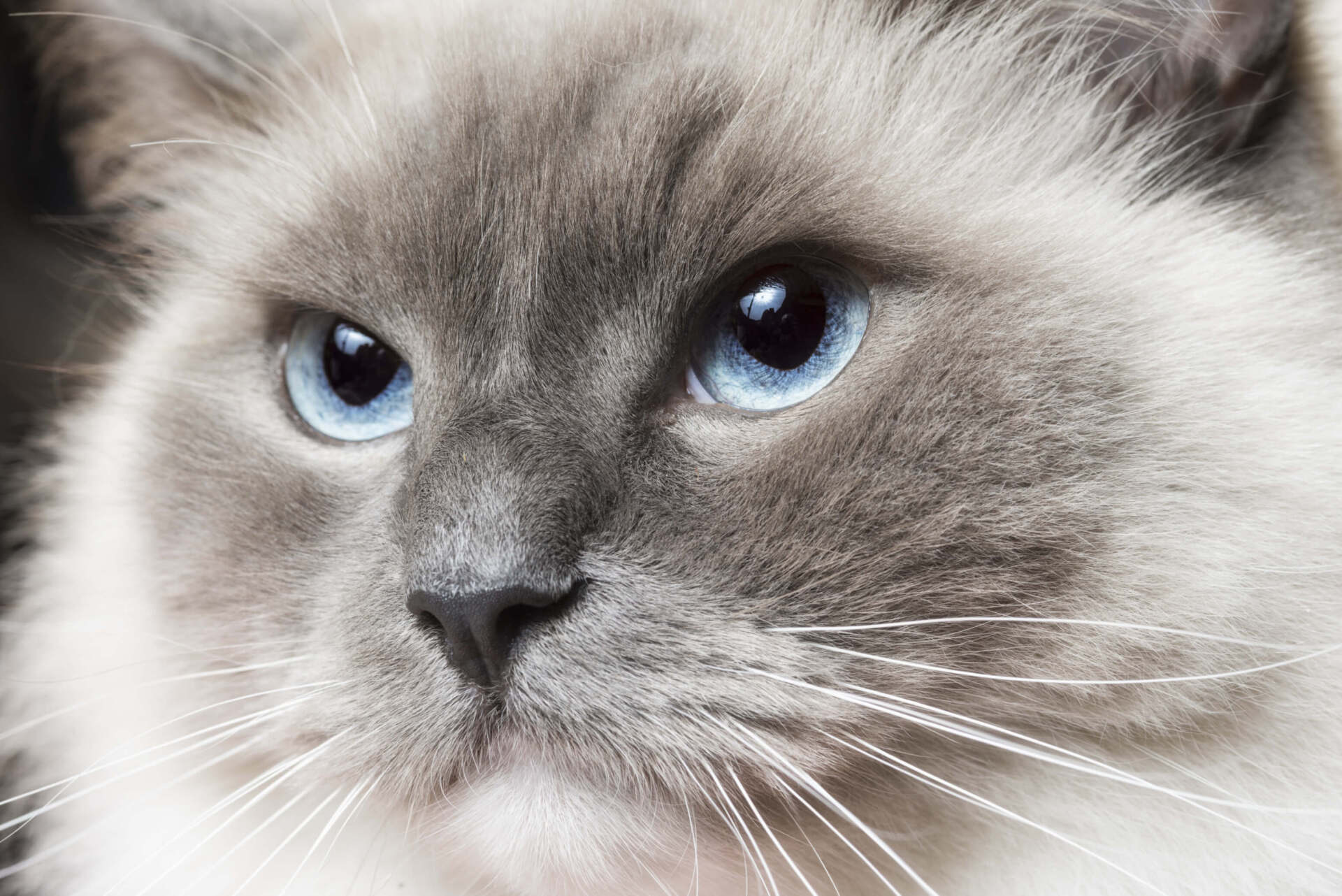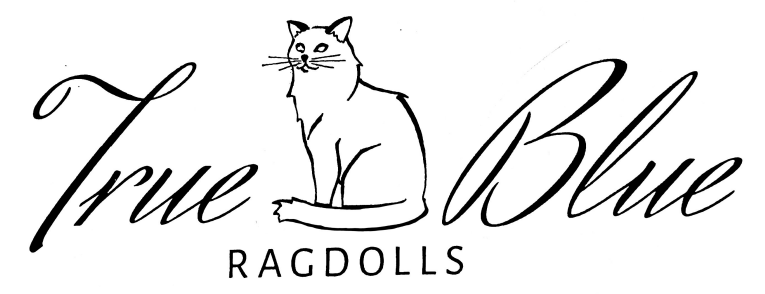Breed Info
Why Ragdolls are a uniquely desired breed.
The elegant, varied, and captivating appearance of the Ragdoll, combined with its affectionate and loyal, puppy-like demeanor, make them the perfect family pet.
History
In the 1960s, a breeder by the name of Ann Baker, located in Riverside, California, developed the Ragdoll breed from non-pedigreed cats of Persian/Angora and Birman or Burmese-esque descent.
By selecting individuals with the beautiful appearance, sweet temperament and unique features she wanted for her breeding program, Ann created the Ragdoll breed. Numerous websites, including the Ragdoll Historical Society, provide a more in-depth history of the Ragdoll, but it is important to note that they were bred to be a very special and endearing cat, as they are known for displaying more devotion to their families than most other cat breeds.
Appearance
Ragdolls are beautiful cats known for their stunning blue eyes and mid-length, bunny-soft fur. Though not quite hypo-allergenic, people can be less allergic to Ragdolls because they lack an undercoat. They are typically big cats, with larger males weighing 15-20 pounds and females typically weighing around 10-15 pounds.
The Ragdoll breed is known for having a variety of patterns and colors. There are three main patterns: bi-color, colorpoint, and mitted. Patterns come in six colors: seal, blue, chocolate, cream, lilac, and red. Points may be solid, lynx, tortie, or torbie (tortie and lynx). Mathematically speaking, this means that many beautiful combinations are possible when it comes to the Ragdoll's appearance.
Temperament
Ragdolls are gentle, trusting felines who display much devotion to their owners. Commonly referred to as puppy-dog cats, they are fairly quiet animals who love following their family from room to room, gently trilling and often purring. They are affectionate, gentle, playful, and loving cats.
Because they were bred to have an easygoing temperament, they are the perfect family pet. They easily adapt to their environment and enjoy the companionship of children and other pets. Depending on the Ragdoll and its training, some are known to enjoy car rides, play fetch, walk on a leash, play with water, and flop their bodies into Ragdoll positions as they are held or lay on the floor.




